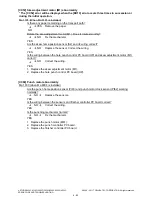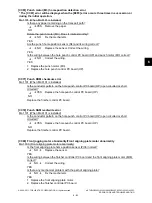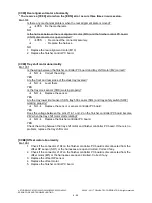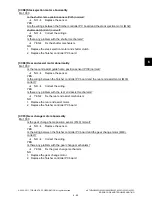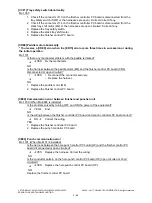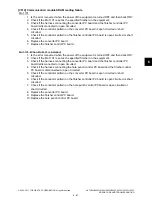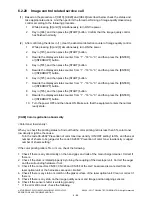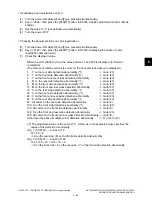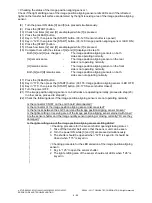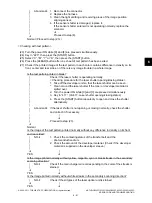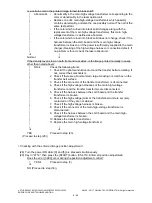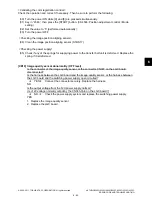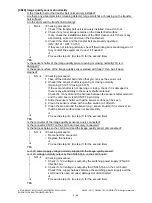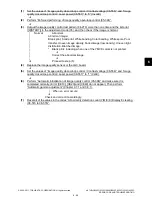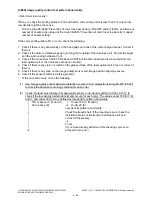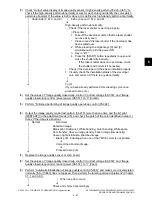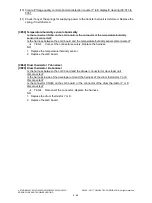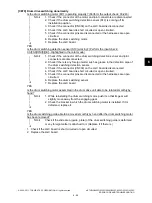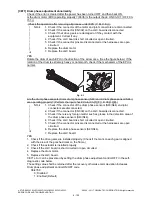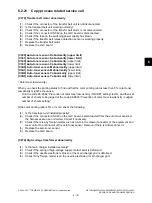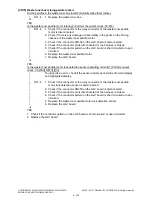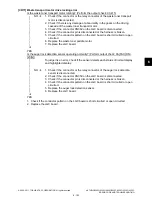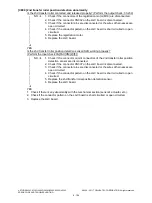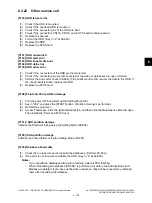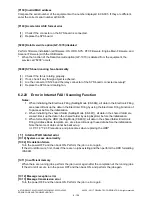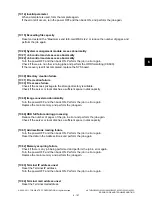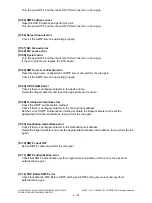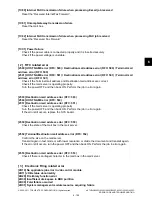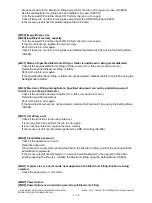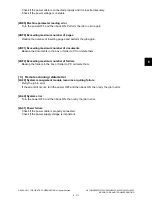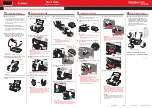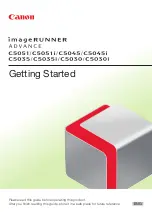
e-STUDIO2020C/2330C/2820C/2830C/3520C/3530C/4520C
© 2008 - 2011 TOSHIBA TEC CORPORATION All rights reserved
ERROR CODE AND TROUBLESHOOTING
6 - 96
[CE40] Image quality control test pattern abnormality
<Color toner low density>
When you check the printing status to find out that the color printing ratio is less than 5%, color toner
low density might be the cause.
Turn the code 08-2692 “Prevention of color toner low density / ON/OFF setting” to ON, and then set
number of sheets to be judged at the code 08-2693 “Prevention of color toner low density / Judged
number of sheets setting”.
If the color printing ratio is 5% or more, check the following.
1. Check if there is any abnormality on the hand grips and rods of the main charger cleaner. Correct if
there is.
2. Check if the drum is rotated properly by turning the coupling of the developer unit. Correct the auger
and the surrounding hardware if not.
3. Check if the connectors CN337, CN346 and CN358 of the LGC board are disconnected from the
laser optical unit or the harnesses are open circuited.
4. Check if there is any stain or scratch on the glass surface of the laser optical unit. Clean or correct if
there is.
5. Check if there is any stain on the image quality sensor and Image position aligning sensors.
6. Check if the sensor shutter is working properly.
*
If the error still occurs, check the following.
(1)
Use “Image quality control abnormal detection counter Y to K display/0 clearing (08-573 to 576)”
to check the abnormal occurring condition for each color.
(2)
Check “Output value display of image quality sensor / Low-density pattern (05-391-0 to 3)” to
check if the low-density pattern abnormality occurs for each color. The values under 180 for Y, M
and C, and under 20 for K are defined as low-density pattern abnormality.
|
|
|
|
|
|
|
|
|
|
180 or above (Y, M and C)
20 or above (K)
|
Under 180 (Y, M and C)
Under 20 (K)
Low-density pattern abnormality
Check the transfer belt. If the cleaning is poor, check the
installation status of the transfer belt cleaner unit and
correct it if necessary.
To (9)
(If you have already performed this checking cycle once,
proceed to step (4).)

